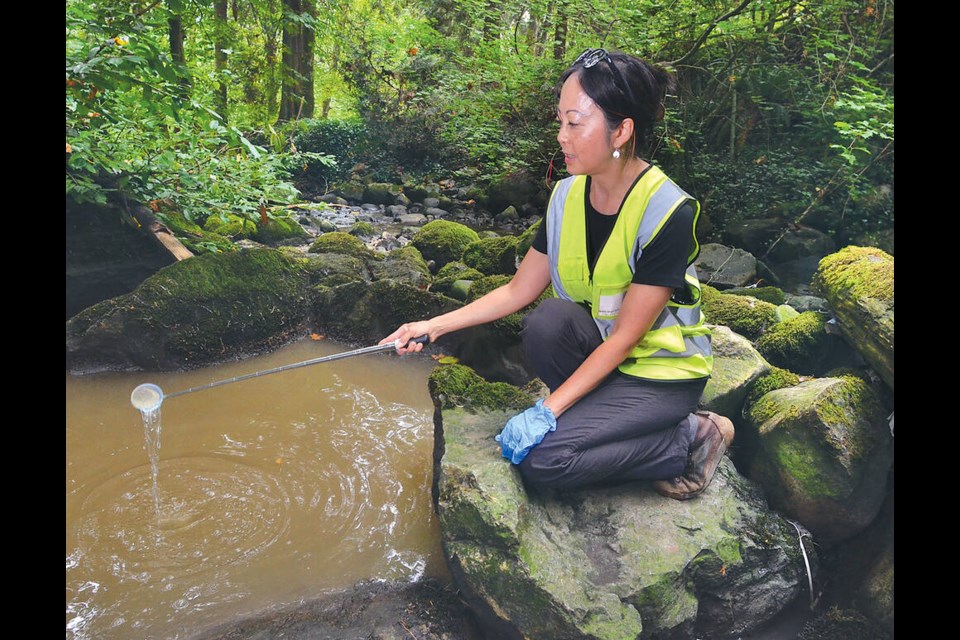A second spill into Wagg Creek in under a week has highlighted the fact there's still a long way to go to protect local creeks say local Streamkeepers.
In the first instance on July 26, local dog walkers spotted a white milky substance draining into Wagg Creek from a storm drain and flowing downstream for several hours.
James Smith said he was walking his dog near the creek in the vicinity of the Fell Street Armoury when he saw something grey or whitish coloured draining from the uphill outfall pipe. “It was the only colour of water that was coming through that pipe,” he said.
But by the time city officials were alerted and went to investigate, the spill had already washed through the creek.
One week later, Carolynne Robertson, vice-president of the North Shore Streamkeepers, was at the same outfall when she saw what appeared to be a significant sediment spill coming from the same outfall pipe.
“The water was completely brown. You could not see a couple of inches down,” she said.
Robertson said she reported the spill to the City of North Vancouver, which sent a crew out to investigate.
City crews did attend and saw "a small amount of scentless, brown substance" said spokesperson Lyndsey Barton but "it was too small of an amount to conduct testing."
Crews also drove through the catchment looking for potential sources of pollution but found nothing, added Barton.
Robertson said sediment spills are a frustratingly common occurrence in the area, particularly as increased construction makes the issue more challenging.
While there are erosion and sediment control bylaws in place, it is all too easy for sediment management systems to fail if they are not being monitored, she said.
Unfortunately, once spills are washed out of the immediate area, it's hard to identify the source, she said.
Streamkeepers launch water quality monitoring project
In an effort to nail down what is entering local creeks, the North Shore Streamkeepers group is embarking on a stormwater quality monitoring program, which will involve gathering samples from stormwater pipes during times when significant rainfall happens following a period of drought.
Although both of the recent spills happened during dry weather conditions, research shows the concentration of pollutants that gets washed into local streams is higher during those “first flush” conditions than at other times, said Robertson.
“It’s been known for a long time that heavy metals and all sorts of vehicle dust also accumulates on the road” then gets washed into local streams, she said. That includes the chemical 6PPD-Q, the tire toxin that is deadly to coho in tiny concentrations, as well as more common roadway pollution, which all “gets washed as a deadly soup into creeks when it rains,” she said.
Streamkeepers are working with environmental consultants to prioritize the outfalls for sampling, said Robertson, based on size and location of the catchment area.
“Urban runoff is one of the major threats to salmonids right now,” she said.



